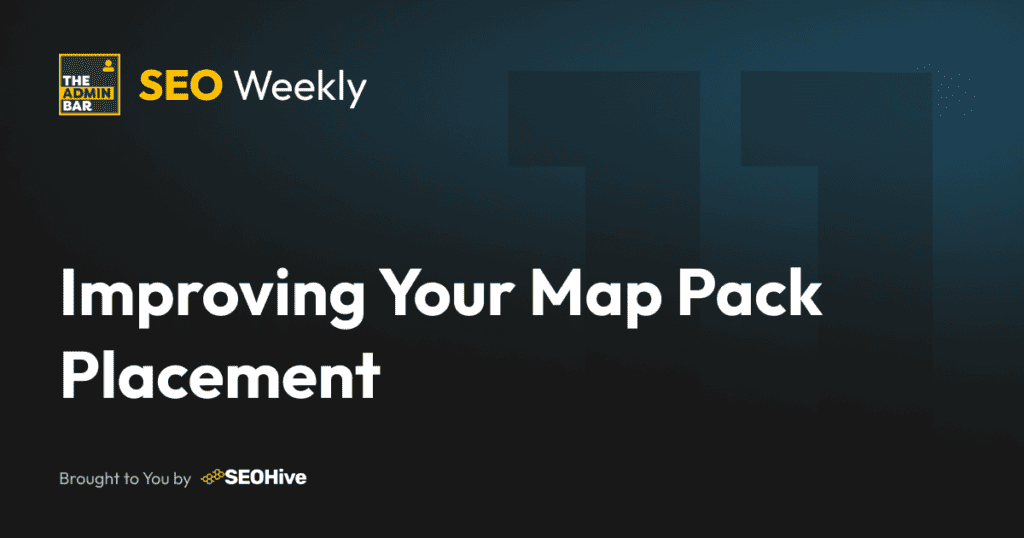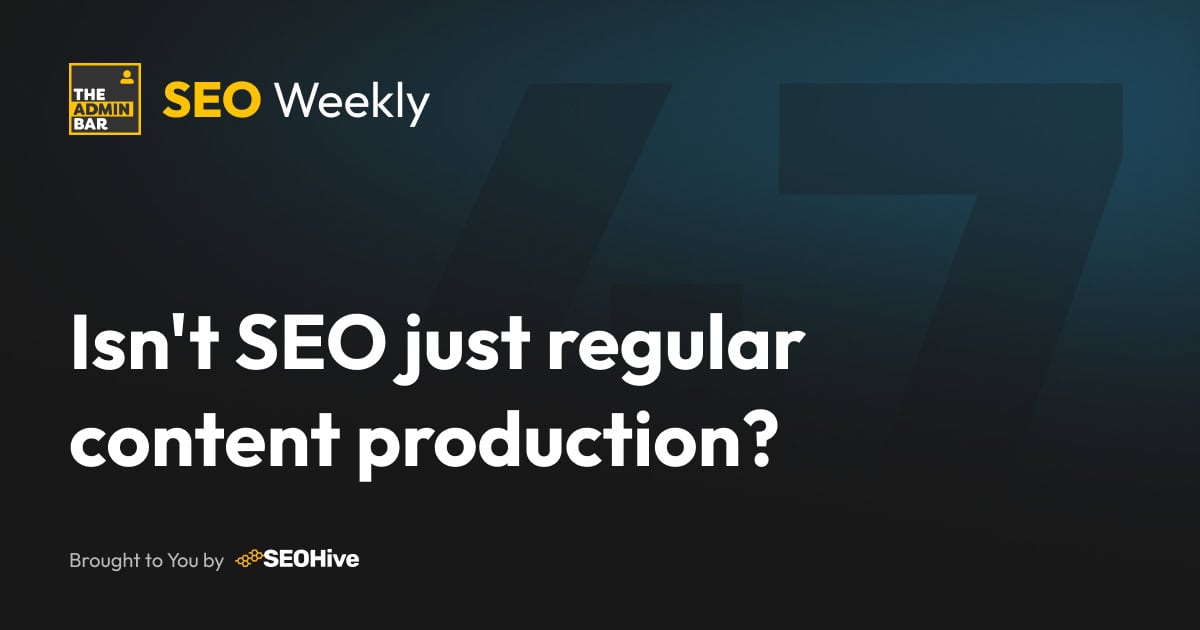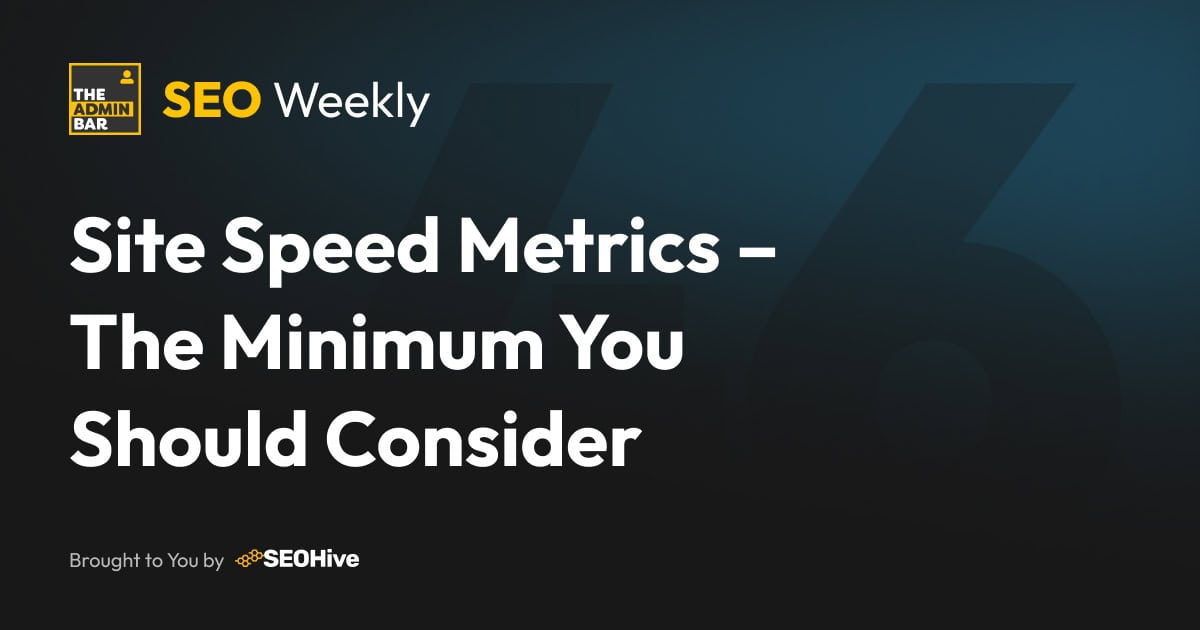This post comes directly from a comment on an earlier post. Faye asked how breadcrumbs benefit local search, especially for sites struggling with map rankings.
As I mentioned in my comment, while breadcrumbs themselves aren’t directly involved in local SEO, they can indirectly help by signposting Google to appropriate location pages. But if you’re specifically looking to improve map pack rankings, you need a more focused approach…
“What is that approach?” I hear you scream…
This post will look at what actually moves the needle for map pack placement (Faye Murray, this is for you!):
1️⃣ Google Business Profile Optimization
This seems obvious, but I regularly audit GBPs that are missing crucial information and/or aren’t set up correctly. If you don’t get this bit right, none of the rest is going to work!
Complete Every Single Field:
– Set accurate business categories (primary and secondary)
– Complete business hours (including special hours for holidays, etc)
– Add a comprehensive list of your products or services
– Upload high-quality photos of your business with proper alt text
Consistency Is Key: Ensure your NAP (Name, Address, and Phone Number) is identical across your GBP, website and citation sources. Even minor discrepancies can impact rankings.
Regular Updates Matter: Active profiles generally perform better, so:
– Post weekly updates (news/blogs, offers, events or general posts)
– Answer questions promptly (or better yet, start your own Q&A)
– Respond to ALL reviews (positive and negative) promptly
– Update photos regularly, especially interior and team photos
Bonus Tip: By running a Local SEO Audit (we do those at SEOHive), you can see the types of content that those ranking in the top 5 are using, so you know you’re uploading content that will make a difference!
2️⃣ Local On-Page SEO Factors
Localized Content Strategy:
This is another area where I see people fall down regularly. You SHOULD create individual location pages for each area you want to serve. You SHOULD NOT create duplicate pages and just change the location names!
Each Individual Location Page Needs to:
– Include city name in title tags, headings, and naturally throughout the content
– Embed a Google Map on location pages
– Add location-specific testimonials and case studies
– Include references to local landmarks, neighborhoods, and relevant communities
– Add schema markup specifically for local businesses (LocalBusiness schema)
Technical Local SEO Elements:
– Properly structured location-based URL hierarchy (domain.com/locations/place-name)
– Internal linking that strengthens location pages (dynamic tags from services/testimonials)
– Mobile optimization – might sound basic, but this is EVEN MORE important for local search
– Location-specific metadata
– Localized image alt text
3️⃣ Local Link and Citation Building
Citations are the signposts of the Local SEO game. They’re basically references to your local website citing your NAP details from above. Building these consistently and accurately is the key to any decent Local SEO plan (and yes, we do this too at SEOHive).
Citation Consistency: Ensure your business information appears consistently across:
– Major data aggregators
– Industry-specific directories
– Local directories and chamber of commerce listings
– Social media profiles
– Global Citation Directories
In addition to citations, you can boost your Local SEO presence even more with dedicated local link and review strategies…👇
Local Link Building Opportunities:
– Sponsor local events and organizations
– Get featured in local news publications
– Join local business associations
– Create content about local events or issues
– Partner with complementary local businesses and post about it online
Location-Specific Review Strategy:
– Actively solicit reviews on Google (but follow guidelines)
– Respond thoughtfully to all reviews
– Address negative reviews professionally and promptly
– Implement a systematic review generation process
4️⃣ Behavioral Signals
Just like your organic listings, Google can see the CTR and Bounce Rate of your Local listings…
Click-Through Optimization:
– Create compelling GBP descriptions and posts
– Use high-quality, attention-grabbing cover photos
– Include calls-to-action in your GBP posts
– Ensure your business name accurately reflects your services (without keyword stuffing)
Engagement Factors:
– Encourage customers to use the messaging feature
– Add products/services to your profile
– Track and respond to “people also search for” queries
– Monitor popular times and adjust operations accordingly
5️⃣ Competitive Analysis
Also, just like organic SEO, it’s a game of displacement. Understanding what types of content you need, how active others are at gaining reviews and how active profiles are really makes it easy to understand how much effort you’re going to need to put in.
Benchmark Against Top Performers:
– Compare category selections with top-ranking competitors
– Analyze their review velocity and quality
– Assess their content strategy for location pages
– Evaluate their citation profiles
– Check their posting frequency and engagement
Fill Competitive Gaps:
– Identify attributes competitors are missing
– Look for underserved areas in competitor content
– Find unique local connections you can leverage
– Analyze surrounding competitors in adjacent postcodes/zip codes
6️⃣ The Proximity Factor
It’s important to acknowledge that proximity is a major factor in map pack rankings that you can’t directly control. A user searching in different locations will see different results based on their physical proximity to the businesses around them.
However, you can mitigate some proximity limitations by:
✅ Creating service-area pages for locations/neighborhoods you serve (see above)
✅ Establishing a physical address (even a virtual office – these work WAY better than “service areas”) in target areas
✅ Strengthening other ranking factors (number of images/videos, number of reviews, etc) to overcome proximity disadvantages
✅ Focusing on less competitive, longer-tail local keywords
Tracking Your Progress
As we discussed last week, all of this only means something if you’re tracking and recording your progress (especially if it’s for a client!).
To properly measure improvement in map pack rankings, you need to:
– Track rankings from different locations within your service area
– Monitor impressions and actions from GBP insights
– Set up conversion tracking for GBP-originated traffic (including UTM Parameters)
– Regularly audit competitors who appear in the map pack for your target keywords
– Document all optimization changes to identify what moves the needle
Remember: Map pack optimization is an ongoing process, not a one-time fix. Local competitive landscapes change constantly, and consistent attention to your local presence will yield the best long-term results.
I’d love to know your experiences with Local SEO. Has this answered your question, Faye? Drop a comment below! 👇
Join the Conversation!
There's a dedicated thread on this post inside of The Admin Bar community. Join in on the conversation, ask questions, and learn more!
Group Thread





